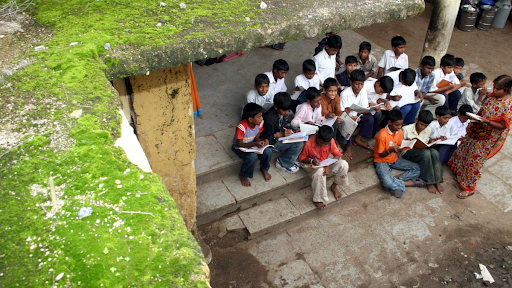



Academic freedom empowers scholars to research, teach, and express ideas without interference. It faces threats from politics, funding bias, rigid curricula, and ranking pressure. Ensuring autonomy, increasing public funding, reforming evaluation systems, and promoting global collaboration can safeguard this freedom while balancing it with ethical responsibility and scholarly integrity.

Copyright infringement not intended
Picture Courtesy: THE HINDU
It refers to the right of teachers and students to teach, learn, research, and express ideas without fear of interference or punishment. It ensures universities remain hubs of critical thinking and innovation.
It allows scholars to explore controversial ideas, challenge norms, and advance knowledge. For example, ancient universities like Nalanda and Taxila, succeeded because they encouraged open intellectual exchange.
In medieval Europe, scholars who challenged church doctrines risked persecution. The concept took shape in the early 19th century when Wilhelm von Humboldt founded a university in Berlin. His Humboldtian model emphasized two principles:
This model spread globally, shaping modern universities. Today, academic freedom means:
A 2005 Global Colloquium at Columbia University clarified it as the freedom to research, teach, speak, and publish, guided by scholarly standards, without interference.
Political Interference
Politics shapes academic freedom. For example, in the Soviet Union in the 1930s, fields like sociology and genetics were banned as “bourgeois pseudoscience.” Similarly, Trump’s policies pressured U.S. universities, with Columbia University accused of surrendering its autonomy, while Harvard fought legally to protect it.
In India, scholars at universities like JNU have faced backlash for criticizing government policies, raising questions about academic freedom in democracies.
Publish or Perish Culture
Modern academics face intense pressure to publish research papers to secure tenure, promotions, or funding. This culture limits creativity. Scholars prioritize quantity over quality, chasing trends favored by funding agencies or journals rather than pursuing new ideas.
University Rankings
Universities obsess over global rankings (e.g., QS World University Rankings), which heavily weigh research output. This forces institutions to prioritize publishable research over teaching or independent exploration, curbing academic freedom.
Rigid Curricula
University curricula are pre-scheduled, leaving little room for teachers to explore unconventional topics. This rigidity suppresses innovation and critical thinking.
External Influence
Research depends on funding from governments, corporations, or agencies with their own agendas, which influences what scholars study, limiting their freedom to explore unpopular or unprofitable topics.
Ensure Institutional Autonomy => Establish independent governing bodies for universities to reduce political interference. These bodies should include scholars, alumni, and civil society representatives, free from government control.
Increase Public Funding for Research => Boost government funding for universities and research institutions to reduce reliance on private or corporate sponsors. Create transparent, merit-based grant systems.
Reform the “Publish or Perish” Culture => Revise academic evaluation criteria to value quality over quantity. Promote long-term, impactful research and recognize teaching excellence alongside publications.
Protect Scholars from Political and Social Backlash => Enact legal safeguards to protect academics from harassment or censorship when they critique social or political issues. Strengthen grievance redressal mechanisms within universities.
Enhance Global Collaboration => Promote international partnerships, student exchanges, and joint research to expose academics to global best practices in academic freedom.
Balance Freedom with Responsibility => Train academics to uphold scholarly standards and ethical research practices. Establish clear guidelines distinguishing academic freedom from misinformation.
Must Read Articles:
Technology And The Challenge Of Equitable Education
Source:
|
PRACTICE QUESTION Q1.Analyze the implications of privatization in the education sector. While it brings innovation and infrastructure, does it also lead to increased inequality and commercialization of learning? 150 words |






© 2026 iasgyan. All right reserved